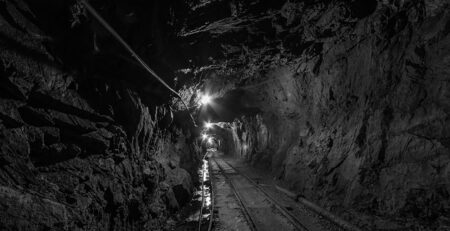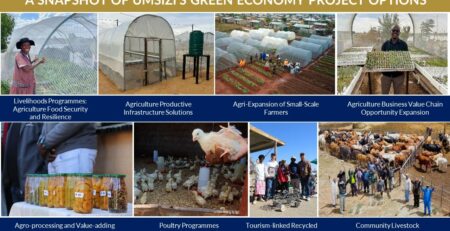SLP Compliance: Understanding the implications of mine closures on mining communities
In order to mine anywhere in South Africa, on any scale, a company must submit a Social and Labour Plan (SLP) to the Department of Mineral Resources and Energy (DMRE) if they wish to be granted and maintain a mining right. SLPs are a component in the government’s aim to ensure that the mining sector is equitable, reversing the legacy of historic inequality in the mining sector. Attaining and then adhering to SLP compliance will mean a better future for many thousands of currently vulnerable South Africans.
Why are SLPs and SLP compliance necessary?
It becomes very apparent how important SLP compliance is when considering the nature of the impact that mining operations have on the communities in which they operate. Throughout history and all over the world, mining towns have been established where there was no prior human settlement due to a mine’s operations. This is no less true in South Africa. When a mine closes, this results in a direct loss of jobs for mineworkers and opportunities for the broader community for those living in a mining town. When a mine begins operating in an established community, that community often becomes dependent on the mine’s operations for their continuing socioeconomic growth and development. When SLP compliance is in place and followed, intentional actions are undertaken to ensure the long-term viability and sustainability of communities impacted by mining.
Not only are those employed directly by the mine at risk when a mine closes, but many secondary industries that develop in a mining town are also very vulnerable to any changes to the mine’s productivity. Examples of such secondary employment include any jobs relating to supply chains, or the employment offered by services that would be built specifically to cater for the needs of those employed directly by the mine. If the mine should close, those working in these service industries are also likely to see their own jobs cease to exist as well.
SLP compliance seeks to ensure that gainful employment is still available to mine affected communities, even beyond the life cycle of the mine. Through upskilling and livelihoods development programmes, a vibrant secondary economy can be established which long outlasts the life of mine.
SLP compliance and historic inequality in the industry
It is a sad reality, but there are all too many historical examples of mines, or the industry as a whole, not adhering to the high standards of safety and employee health that is expected today. Poor living and working conditions were often the norm, and unsafe working conditions were often to be expected. SLP compliance also aims to ensure that these mistakes are not repeated, but that the safety and dignity of mine workers is guarded, thus ensuring the best possible quality of employment for mine workers into the future.
There is also a strong drive to ensure employment equity and transformation in mining. The government is specifically focused on ensuring that historically disadvantaged persons (black, Indian, and coloured South Africans) as well as women are increasingly represented at higher management levels of the mining industry.
SLP compliance is a legal obligation throughout the lifetime of operations
Once an SLP is submitted and approved, and the mining rights are awarded, the SLP becomes a legally binding document. To maintain the mineral rights, the objective laid out by the SLP must be implemented. SLPs must also be reviewed and resubmitted every 5 years, for the duration of the life of mine. When done properly, SLP implementation will lead to the communities surrounding the mining operation being empowered, and tangible socio-economic benefits will be seen by community members and other beneficiary stakeholders. Effective implementation of all the elements of the SLP is paramount in realising the original aims of the legislation.
What does SLP compliance aim to do?
SLPs aim to see that petroleum and mineral resources are developed, and economic growth is promoted in South Africa. This growth and development cannot be at the expense of workers or communities in which the mining operations function.
To this end, SLPs fall within the general aim to advance the welfare of all South Africans, economically and socially. SLP compliance thus ensures that those holding the rights to mine make lasting contributions to the economic and social development of the areas in which they function, as well as the regions from which most of their workforce are sourced and originate from (also known as Labour Sending Areas).
Where SLP compliance is attained and adhered to, it will have lasting benefits on the communities that rely on the mining concern, even if the mining operation downscales during its operational lifetime, and even after the project comes to a close.
Adding real value to communities
When SLP compliance is earned and implemented, it will produce real benefits to the communities it aims to develop and uplift. These can be seen in the upgrading of infrastructure in the area of operation. Improving schools, buildings and roads would mean benefits to the community for years after the operations have come to close. Providing water, housing and sanitation in the region is another way that SLP compliance is applied in practical terms for the community members to also benefit from the mining operations.
Other aspects that SLP compliance can address is training of community members in various career paths, and programmes that equip the people with other useful skills, such as being taught to cultivate their own food as well as other trades, like plumbing, electrical skills, or carpentry work.
Lastly, the SLP aims to eradicate poverty and support community members to enter into meaningful socioeconomic activity which is not dependent on the mining industry. Various interventions, like livelihood development projects, can be implemented in mine host communities to further establish socioeconomic development.
SLP compliance benefits the community even after the mine no longer operates
SLP compliance is expected beyond the lifetime of a mine, since its responsibilities as outlined in the SLP do not terminate when the mine closes. Not only is the aim to see the above types of community benefits tangibly produced by the end of the mine’s life cycle, but the land where the mining has taken place must be rehabilitated so that it can be utilised for agricultural purposes by the communities that remain after the mine closes. All SLPs stipulate that funds need to be put aside throughout the lifetime of the mining project to deal with the future closure of the mine. SLP compliance ensures that these measures are implemented.
There must also be a clear five-year closure process in place in order to ensure that the negative socio-economic effects of closure are mitigated. SLP compliance will see to it that the rehabilitation of the area is enforced, and that the mine’s workers have been both upskilled (through Human Resources Development programmes) and retrained (through Portable Skills programmes), so that they can find employment once the mine has ceased its operations.
One of the biggest challenges
One of the largest obstacles to effective SLP compliance is when an SLP is developed that is not relevant to the community that it seeks to serve. It is not uncommon for employees and residents to feel overlooked when an SLP is being developed, leading to resentment and real or perceived feelings of not truly benefitting from the programmes that are being implemented. Even if there is a high rate of true SLP compliance, these can be the real outcomes for the people on the ground.
This is why genuine stakeholder engagement is so vital in the design and implementation of an SLP. Mining right holders are required, by law, to conduct processes of broad-based stakeholder engagement when developing a new SLP. Stakeholders that should be consulted include municipalities, traditional authorities, community leaders, as well as the broader community themselves. Organised labour should also be consulted through the Future Forum or SLP Forum structures. For more information about stakeholder engagement, as well as how Umsizi can assist with your stakeholder engagement needs, read this article.
SLP Compliance is attainable
Taking all this into account can be daunting, but SLP compliance does not have to be an insurmountable obstacle. Umsizi has successfully developed over 400 Social and Labour Plans for various clients, including multinational mining companies as well as smaller mining right holders. We have helped each of these companies attain SLP compliance, guiding them to secure the necessary rights to conduct their businesses and ensuring that their impact on their host communities is tangibly felt and reduces social risks to the operation.
Umsizi’s expert stakeholder engagement approach ensures that everyone involved in SLP compliance truly benefit from mining activities, in real and tangible ways, in each individual context that every SLP is targeting.
This is the goal of SLP compliance: ensuring that companies profit not just themselves, but also the communities and all the stakeholders involved as they operate in South Africa. SLP compliance is a positive and necessary step towards that end, and Umsizi can partner with you and your business to ensure that SLP compliance means the mining activities you undertake will uplift your host communities in the long term.
Contact us today so that we can begin the process of securing SLP compliance. To see some of the successful sustainable socio-economic solutions that we have implemented, click on this link here.
Bibliography/Further Reading:
https://www.dmr.gov.za/Portals/0/social%20and%20labour%20plan_guideline.pdf
https://www.wits.ac.za/cals/our-programmes/environmental-justice/social-and-labour-plans/
https://www.goldfields-southdeep.co.za/our-communities/social-and-labour-plans
https://www.bizcommunity.com/Article/196/608/184255.html
https://journals.co.za/doi/abs/10.10520/ejc-vp_stock_v11_n10_a6









